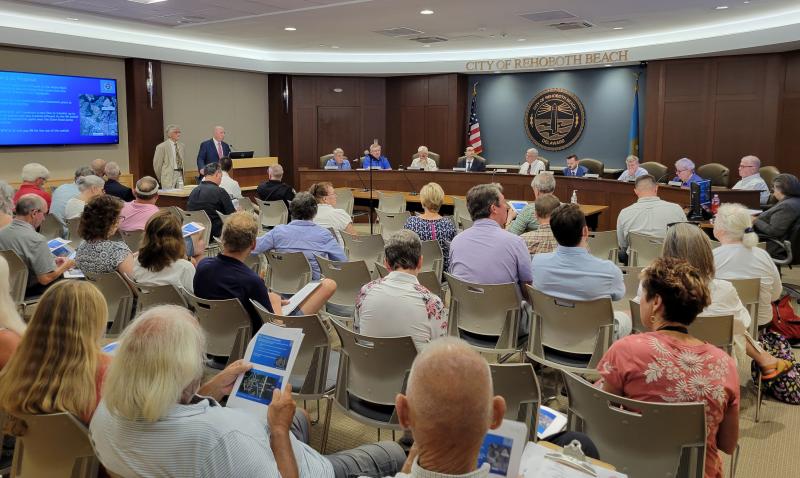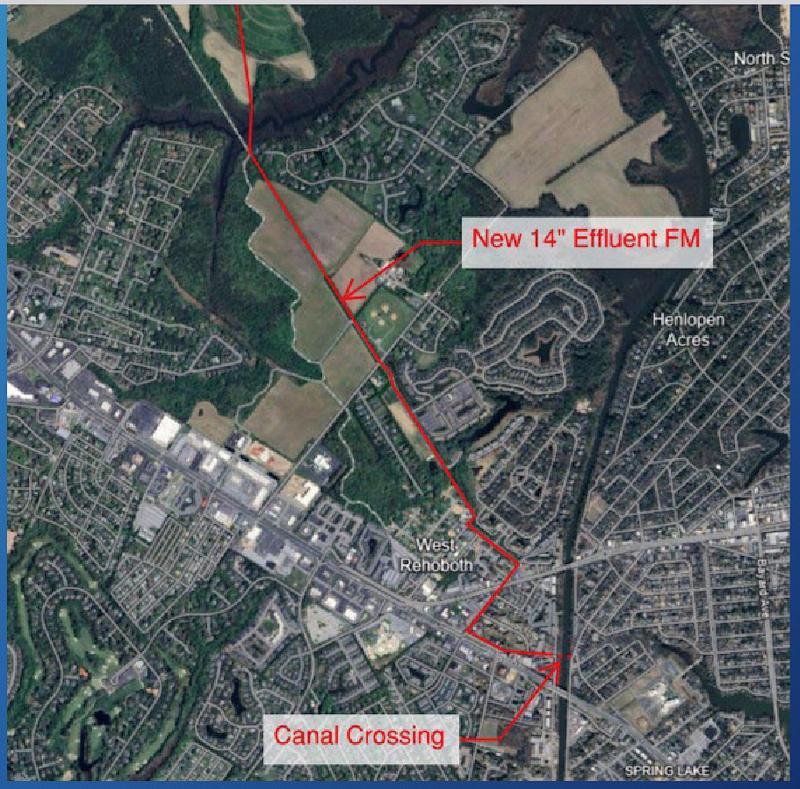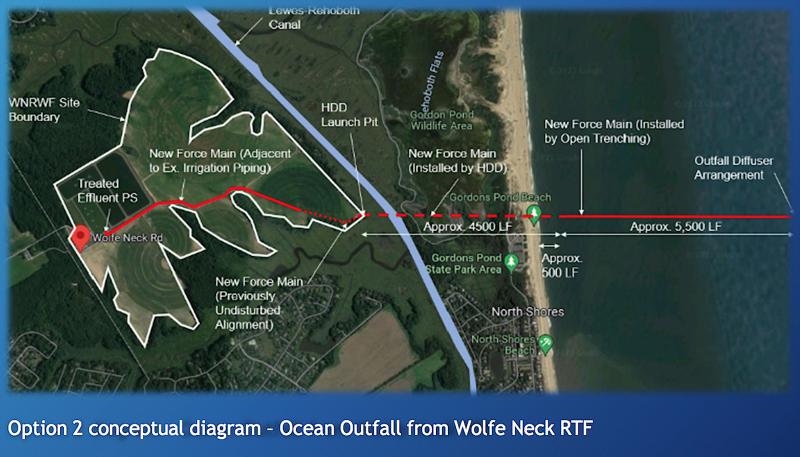Rehoboth officials don’t rule out new wastewater partnership
There are still more questions than answers, but following a presentation by Lewes Board of Public Works and Sussex County officials, Rehoboth Beach commissioners agreed to continue to explore the creation of a regional wastewater partnership.
Lewes BPW needs to build a new wastewater treatment facility for a number of reasons. After years of analysis, a consensus was reached that the best plan moving forward would be for the county to expand its Wolfe Neck Regional Wastewater Facility, located between Lewes and Rehoboth Beach, and then have Lewes BPW build a new plant on the site.
Those plans hit a snag when an archaeological discovery was made on the Wolfe Neck property. This has made the site off-limits for any future land disturbance until studies are complete, which could take years.
Officials from Lewes BPW and the county made a presentation to Rehoboth commissioners July 8.
Lewes BPW President Tom Panetta said they recognized years ago that Lewes’ wastewater treatment facility was becoming more and more vulnerable to sea-level rise. If Hurricane Sandy had hit 15 miles south, Lewes would have been inundated, he said.
Panetta said the plant was designed to expand, but what really needs to happen is hardening the plant. However, he said, it’s not a cost-effective option.
Another argument made was that removing the effluent Lewes discharges would improve the Lewes-Rehoboth Canal.
Panetta said they explored a few options, but none of them included removing the discharge from the canal, so Lewes BPW approached the county about pumping the effluent to its Wolfe Neck plant. Plans were in the works for that, but then the archaeological find stopped everything.
Sussex County Administrator Todd Lawson and Hans Medlarz, who recently retired but was the county’s engineer for many years and is still helping the county on a few projects, spoke for the county.
Pointing to decades of working together and, more recently, financing upgrades to the Rehoboth wastewater treatment plant, Lawson said the proposal is an expansion of the relationship. The Rehoboth outfall was built and designed with excess capacity, and now the county would like to pay Rehoboth to access that excess, he said.
Addressing the archaeological issue, Medlarz said the county could build a new treatment plant in the footprint of a storage lagoon at the Wolfe Neck facility. He also said the county has done initial soil work and determined an outfall could be built about a mile-and-a-half north of Rehoboth’s pipe.
There were questions about water quality and monitoring.
Medlarz said there would be two separate permits, but he was confident the county could meet or exceed the quality Rehoboth is putting out. It would be a race against each other to see who could have better quality.
Panetta, Lawson and Medlarz said they were encouraged to approach Rehoboth by the state because they were told that obtaining a permit for a second outfall wasn’t likely, knowing that Rehoboth had the extra capacity.
There were questions about timing.
Panetta and Lawson said it doesn’t need to be done immediately, but some kind of informal agreement is needed by the end of the year.
Permitting will take years, so another year of decision making isn’t really an option, said Lawson.
Ultimately, commissioners agreed to continue discussions with the county and Lewes BPW because there are too many detailed questions that need to be answered to not continue.




















































